
Hey, folks: Bit of a special edition this week, as we’re leading the column with an exclusive interview with renowned artist Cliff Chiang (Human Target, Beware the Creeper, etc.), conducted by our own Devon Sanders. Enjoy the conversation, and you’ll find this week’s reviews further down the page.
Devon Sanders Interviews Cliff Chiang
Growing up, who was the first comic book artist who made an impression on you?
It was probably Paul Smith or John Byrne. My brother bought the first comics in our house, and it was X-Men 172 and Fantastic Four 259. They’re unforgettable!
While many may know you strictly as an artist, you were also an editor at Vertigo Comics. Was the experience of watching others art coming across your desk an influence in your decision to become a full-time illustrator?
It was a great learning experience. I saw, in a very short time, a huge amount of art and approaches to storytelling. One of the assistant editor’s job is usually to do the word balloon placements for the letterer. You take Xeroxes of the art and with a red sharpie, you rough in where the word balloons go. It gave me a very intimate understanding of each artist’s style. And I worked with a bunch of really inspiring people, like Eduardo Risso, Duncan Fegredo, Steve Dillon, and Walt Simonson.
 Soon after leaving Vertigo editorial, you became the regular artist on The Human Target series. How much pressure was there to deliver the goods knowing many of your peers would be viewing you in a totally different light?
Soon after leaving Vertigo editorial, you became the regular artist on The Human Target series. How much pressure was there to deliver the goods knowing many of your peers would be viewing you in a totally different light?
Human Target was really special to me, particularly because I was a huge fan of the original mini-series with Edvin Biukovic. I assisted the editor Axel Alonso on that book, and Eddie visited the offices that year on his way to San Diego. When he learned I was also an artist, he was incredibly encouraging and I was really struck by his passing. I look at my work on Human Target as an attempt to honor his memory.
2006’s Doctor 13: Architecture & Mortality mini-series (now in trade paperback) was a bit of fun, comic book brilliance. What was the appeal in taking on a book featuring a cast of characters, many of whom hadn’t been appeared in a single comic in decades?
The writer Brian Azzarello sold me on the book by telling me it was Adult Swim meets Jonny Quest. We could do just about anything we wanted with these characters, but I think we also were able to boil down what was cool about each of them.
You’d been a full-time artist for years but with Doctor 13, your line art became sleeker and more economic in its linework. Was there ever a conscious decision to push your storytelling skills in a totally different direction or was this just the natural progression of things?
I’m not conscious of a shift in storytelling style, but in terms of drawing there were definitely different impulses. Early on in Human Target, I began to change my approach, moving away from the heavier brush work towards a more linear style. It was fairly open linework with some large spotted blacks. Then you can see me trying to add more rendering into the mix in my issue of Detective Comics (815-816) and the Spectre mini, but with Doctor 13, I finally found a happy medium. And I was really having a lot of fun.
 Up to that point, you’d made a name for yourself with series more rooted in crime fiction (Detective Comics: Josie Mac) and at Vertigo with Beware The Creeper, what made you shift into full-on superheroics with the Green Arrow/Black Canary series?
Up to that point, you’d made a name for yourself with series more rooted in crime fiction (Detective Comics: Josie Mac) and at Vertigo with Beware The Creeper, what made you shift into full-on superheroics with the Green Arrow/Black Canary series?
I’m interested in many kinds of stories, and I really dislike the idea of being pigeon-holed. So I saw GABC as a challenge, to introduce my art to a new audience and explore some artistic possibilities. After Doctor 13, I wanted to see how poppy and graphic I could push things.
June sees you returning to the Vertigo imprint with Greendale, a graphic novel based on a play written and composed by music legend Neil Young. Your name was on a lot of people’s lips coming off your stint on Green Arrow/Black Canary and as cover artist of Secret Six and I’ll have to admit surprise to your taking a step away from the greater superhero universe. Were you at all worried about the short term risks involved in becoming “invisible” to the comics reading public while completing Greendale?
I think that’s always the worry at first, but once you get into the rhythm of a project those fears go away. I had planned to do more DCU cover work during Greendale, but the worlds were so far apart that I found it surprisingly difficult to shift gears.
What was Greendale’s immediate appeal to you as an artist? It was so different from anything that I’d worked on, and it scared me a little. So I had to slay that dragon. I really wanted to make the book live and breathe, give it a real unassuming authenticity.
 In 2001, you co-created Josie Mac, an African-American female, who regularly appeared in Detective Comics along with Batman. Most recently, you participated in the comics anthology, Secret Identities, tales told by creators and featuring heroes of Asian-American descent. How important is it to you that comic book companies not only create multicultural characters but nurture their ongoing development as well?
In 2001, you co-created Josie Mac, an African-American female, who regularly appeared in Detective Comics along with Batman. Most recently, you participated in the comics anthology, Secret Identities, tales told by creators and featuring heroes of Asian-American descent. How important is it to you that comic book companies not only create multicultural characters but nurture their ongoing development as well?
It’s a tricky thing. We need more diversity in the books AND the talent. Not every new character is going to work, and it’s tough to call for more when you know that a lot of the attempts will be horrible. But it’s not about the odds here. We need to create things that are real and enduring.
You’ve also caused quite a sensation with your website, cliffchiang.com, featuring 80’s album covers/superhero mash-ups and WWII-inspired Star Wars propaganda posters. Were you surprised at the overwhelmingly positive responses they’ve generated?
It’s been great to see the reaction to those pieces, especially at conventions when people do a double-take as they pass my table. As comics get more popular, I think we’ve been seeing more and more interplay with pop culture and I like playing with people’s nostalgia and reference points. Superheroes hit a very strong nerve, and when you combine them with other iconic imagery, the result is always more powerful than you’d expect.
What inspires you to still get up everyday and want to create new and better work?
Yesterday’s old and crappy work. Even when I’m happy with a page, there are things that I know can I do better. As long as I can work on projects that challenge and inspire me, I’ll continue to try and be worthy of them and the readers.
 What should we on lookout from you in the future?
What should we on lookout from you in the future?
I’m working on an issue of DMZ, which promises to be a great opportunity for experimentation, and an as-yet-unannounced book with Brian Azzarello. One of my friends told me it was the book I was born to draw, and I’m really excited for it.
Thanks to Cliff, and to Devon. Hope you all enjoyed it, and we plan to bring you more such interviews in the future!
This Week’s Reviews
 Rawhide Kid: The Sensational Seven #1 (of 4)( Marvel, $3.99)
Rawhide Kid: The Sensational Seven #1 (of 4)( Marvel, $3.99)
By Sean Fahey
I gotta give credit where credit is due. There was absolutely nothing about Marvel’s previous Rawhide Kid mini-series, where they “outed” the gunfighter in order to generate controversy sales, to make me think that this new series would be anything other than a gimmicky, insulting, Will and Grace inspired flop. Plagued by an endless string of cliches and failed jokes, courtesy of Howard Stern Show writer Ron Zimmerman, the previous Rawhide Kid was actually a slap in the face to homosexuals, with the Kid portrayed as a flaming Elton John-esque queen.
Intended as a loud and over-the-top satire of the classic western Shane, it simply didn’t work. It would have been a much braver (and more interesting) move to take a more subtle approach, and portray the Kid’s homosexuality seriously. To show the prejudice he would have encountered, and how he overcame that. Thing is, it could have been done in a manner consistent with the character’s decades old history. The lone, stoic, gunfighter that never settled down…the table was already set. Yet, as completely disappointing as the first Rawhide Kid series was, the current one — which follows the Kid as he puts together a band of gunfighters (historical and fictional) to free an imprisoned Wyatt Earp — shows some promise.
Granted the issue opens with the same heavy-handed queen innuendo as the first (the Kid talks about his time in Paris, drinks chardonnay, enjoys some “girl talk” with Annie Oakley, and dreams of getting roughed up by cattle rustlers), but by the second half of the issue, things calm down a little and take a more somber approach, when the Kid goes toe-to-toe with a bunch of ignorant bigots. Here, we get a glimpse into the kind of past prejudices the Kid faced, and overcame, growing up. It’s an attempt at the kind of serious character development I was hoping to see in the first series, but never did.
The issue benefits greatly from amazing artwork by the legendary Howard Chaykin, one of the better visual storytellers in the industry. I don’t think I would have bothered with this were it not for Chaykin’s involvement.
I’ll give the series one more issue. If it reverts back to its insulting and cliched Queer Eye for the Straight Guy roots, I’m done.


 Hawks of Outremer #1 (Boom!, $3.99)
Hawks of Outremer #1 (Boom!, $3.99)
By Sean Fahey
Historical fiction is something I’d like to see a lot more of in comics, especially when it’s as well done as Boom’s! adaptation of Robert E. Howard’s Hawks of Outremer.
Set during the Third Crusade, Hawks of Outremer is, at its core, a sword swinging, character driven revenge tale. Thought dead after his passage to Europe is sabotaged by pirates, Irish war chief and crusader Cormac Fitzgeoffrey returns East to learn one of the few men he considered a friend was betrayed and murdered. Carnage ensues.
One of the things I’ve always admired about Howard (and by extension his characters) is his absolute disdain for pretense, titles, and superficiality. The most grotesque and loathsome characters in Howard’s stories are frequently nobles that inherited their positions, or merchants that exert influence through coin. Fitzgeoffrey, like all of Howard’s protagonists, is a man of action who judges other men solely based on his observations of their character, not what he is told (or “required” by social conventions) to think about them. He scoffs at the idea that the villains that betrayed his friends are untouchable because of their “noble” status, and even has a run in with King Richard on the battlefield where he praises his fighting skills but refuses to acknowledge Richard as his ultimate “master.” This is classic Howard — men are defined by their actions. Period. Funny how decades old fiction is a breath of fresh air, especially in today’s status driven culture.
This is the first time I’ve come across the artwork of Damiam Coucerio, and I was very impressed. The action sequences in this are brutal without being gratuitous, and the layouts and line-work throughout the book are top notch. I don’t know how many Cormac Fitzgeoffrey stories Howard wrote, but I hope Boom! adapts them all. We need more comics (and protagonists) like this.





 The Bulletproof Coffin #1 of 6 (Image, $3.99)
The Bulletproof Coffin #1 of 6 (Image, $3.99)
By Jeb D.
The kind of unfettered imagination that is turned loose on the pages of this comic doesn’t come along every day. Bulletproof Coffin is a piece of metafiction, which posits that writer David Hine (Inhumans: Silent War) and artist Shaky Kane (Judge Dredd) were actually prolific comic creators in the 50’s heyday of horror and crime comics. At the dawn of the Silver Age, when their small publisher is bought out by the emerging giant “Big 2 Comics,” the two part ways with the company, but poverty and alcoholism force Hine to return and churn out commercial hackwork in the new world of corporate comics, while Kane goes underground, producing work of pseudo-mystical philosophy and dark, disturbing art.
As backstory, it’s a bit “on the nose,” and the biographical parallels to such familiar creators as Siegel and Shuster, Stan Lee, and Steve Ditko aren’t exactly subtle. Fortunately, Hine and Kane aren’t settling for cheap roman a clef; the story of the “fictional” Hine and Kane is actually just the engine for the story of our protagonist, Steve Newman, whose job clearing out the houses of the recently deceased leads him to ask questions about a mysterious death, and allows him to discover some vintage comics that just plain shouldn’t exist. We get to read the comics along with Steve, and Hine and Kane are clearly delighted to make them as weird and warped as anything EC ever came up with. Steve’s discovery seems to have piqued the interest of sinister forces, though, none more sinister than his “normal”… and rather disturbing… family.
Kane’s art lives up to the weirdness of the story, and then some: it looks like the slightly demented love child of Mike Allred and Geoff Darrow, and Kane crams it full of Easter eggs that will delight serious comic fans.
Bulletproof Coffin is a fever-dream that’s also a love letter to what’s true and magic in comics. Don’t miss it.





 Avengers Academy #1 (Marvel, $3.99)
Avengers Academy #1 (Marvel, $3.99)
By Jeb D.
For the past few decades, Marvel Comics has been infected with the “X” gene: that is, the idea that every second comic series must gather a group of mismatched superpowered young people, and use their attempts to form into a team as a template for exploring topics of alienation, isolation, and related adolescent anomie. When you get an exceptional talent behind the project you get something as rewarding as Heinberg’s Young Avengers, or Hickman’s Secret Warriors. More often, though, what you get is something like Avengers Academy: something that sticks close to the familiar model, works a few variations, and moves on without disturbing your precious bodily rhythms. Writer Christos Gage and artist Mike McCone are the kind of pros that can be counted on to deliver perfectly competent product. And they do. Next.


 Buzzard #1 (Dark Horse, $3.50)
Buzzard #1 (Dark Horse, $3.50)
by Adam Prosser
Generally speaking, I like my comics complex. I like dense world-building, detail-packed art, tight plotting with lots of twists. I like to put down a comic and feel satisfied, or better yet, to pick it up and read it again in order to catch all the details that have been worked in by the writer and artist. Obviously this has some connection to the rising price of comics in periodical pamphlet form, which make you crave more in a smaller package, but I’d feel the same way even if comics still cost a nickel; it’s just the way I’m wired.
And yet there’s something to be said for simplicity in comics storytelling, and exhibit A would be Eric Powell’s The Goon. Whenever Powell puts out an issue, it’s pretty clearly just 24(ish) pages of whatever he felt like drawing that month. Far from being a drawback, this breezy attitude towards subject matter, in Powell’s hands, invests the comic with energy. Obviously the fact that Powell is an often-hilarious writer and his art is superb is crucial to the comic’s success, but The Goon gets a lot of its entertainment value from Powell’s kitchen-sink, “This month it’s flaming orangutans and Bob Dylan as king of the hobos” approach. In spite of the seeming randomness, Powell’s a good enough writer to keep it reigned into a coherent story.
On the other hand, lately, Powell’s been producing longer and more serious—in other words, more conventional—stories, and the results haven’t been as satisfying. I was pleased to see the last few Goon issues were more of a return to Powell’s berserk style, but now he’s given us a miniseries starring The Buzzard, The Goon’s most “serious” character. Surprisingly, though, I enjoyed it a lot more than Powell’s other attempts at dramatic weight.
Buzzard was actually created as a separate pitch by Powell before being folded into The Goon. He was a sheriff in the old west, cursed by The Goon’s archnemesis The Nameless Man, the Zombie Priest to a sort of weird state between life and undeath, and since then he’s fought the Nameless Man’s zombie legions while looking for a way to end his tormented existence. Having learned that even the Nameless Man no longer knows what Buzzard has become and can’t remove the curse, Buzzard has wandered off on a quest that’s somehow taken him between realities on the back of a zombie horse.
If the Goon is a cartoon film noir with all kinds of random insanity grafted on, Buzzard does essentially the same thing with a western and a more serious tone (though there are a few flashes of Powell’s goofy, random humor). The plot is limited—most of the issue is about Buzzard wandering between worlds until he stumbles into a western-style besieged township—but that’s just fine; the comic works perfectly well as a showcase for Powell’s art, and an effective mood piece. It also features a backup feature, Billy the Kid’s Old-Timey Oddities by Powell and frequent collaborator Kyle Hotz, so it’s got two supernatural westerns for your dollar.
Somehow, despite the inherent angst of the main character, Buzzard feels more spare and deadpan than Powell’s other attempts at serious comics. If he can keep this up, maybe I don’t need him to put a screaming Mexican lizard-man in every comic he makes. Wouldn’t hurt, though.










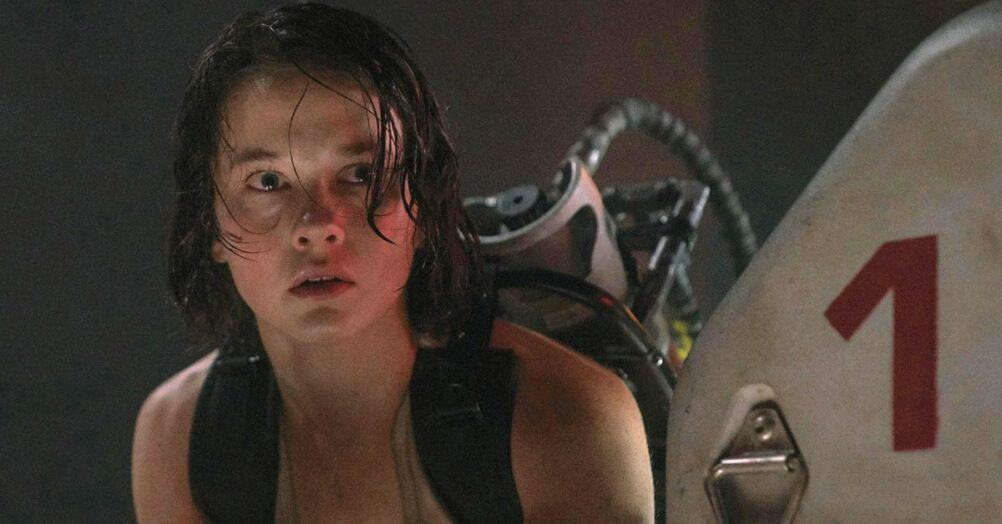


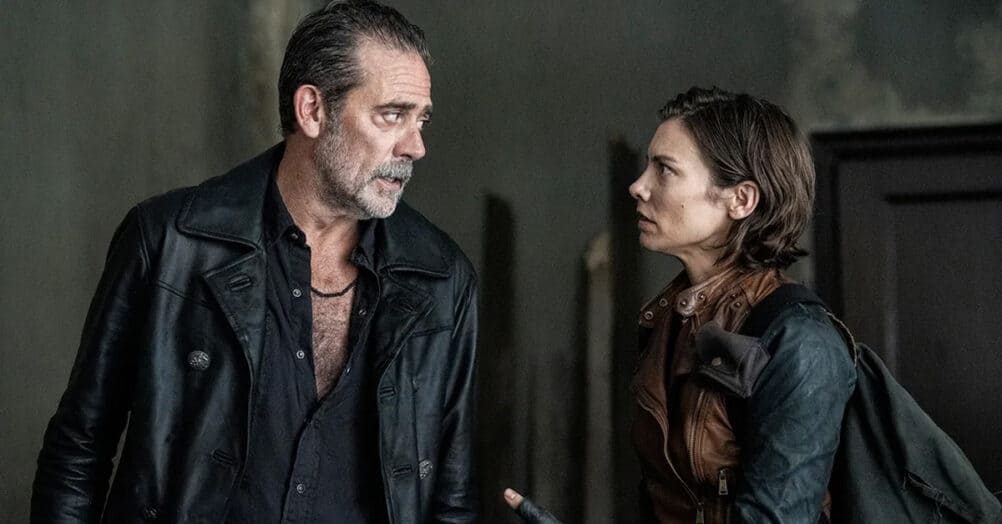
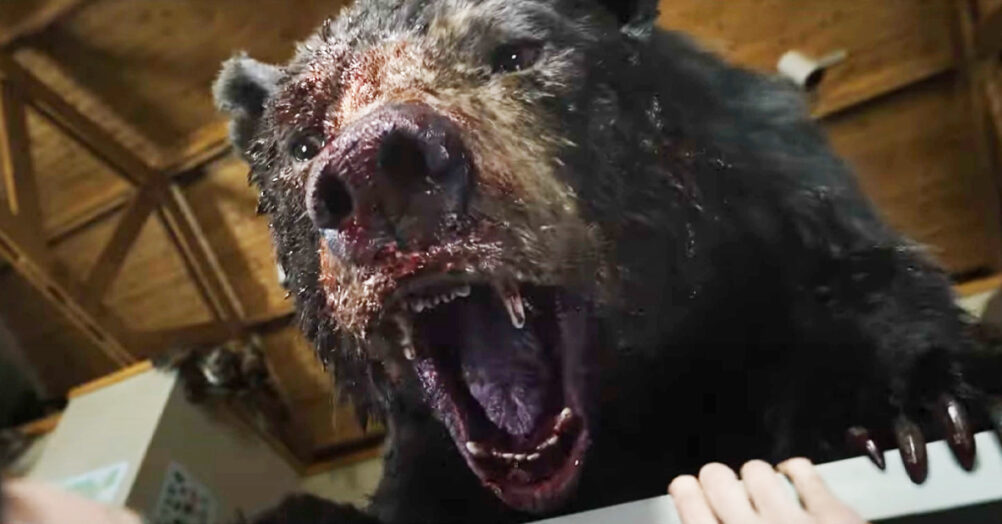


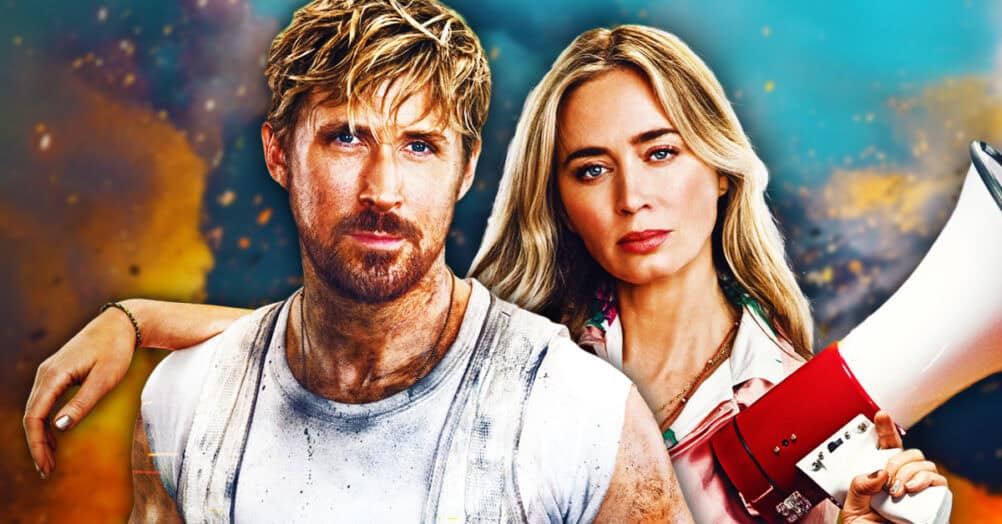

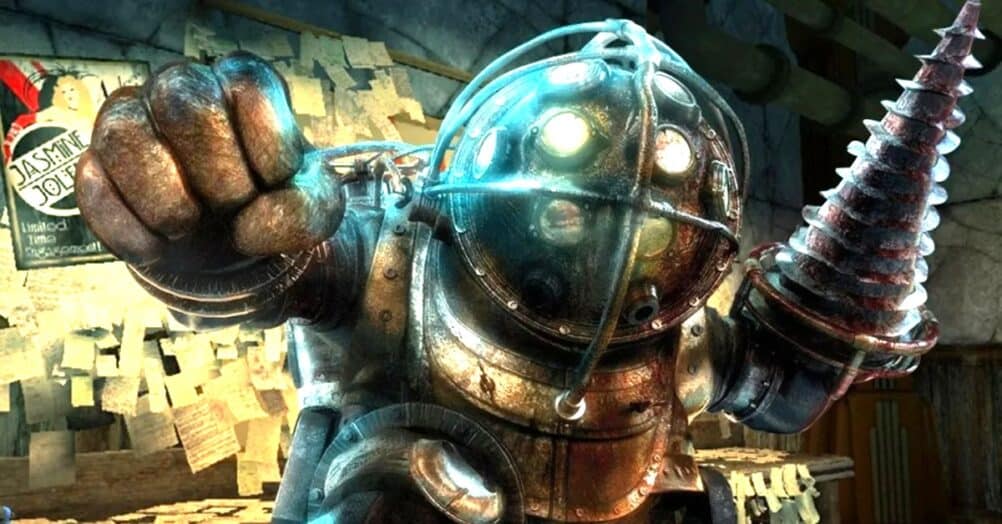
Follow the JOBLO MOVIE NETWORK
Follow us on YOUTUBE
Follow ARROW IN THE HEAD
Follow AITH on YOUTUBE